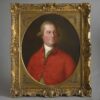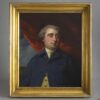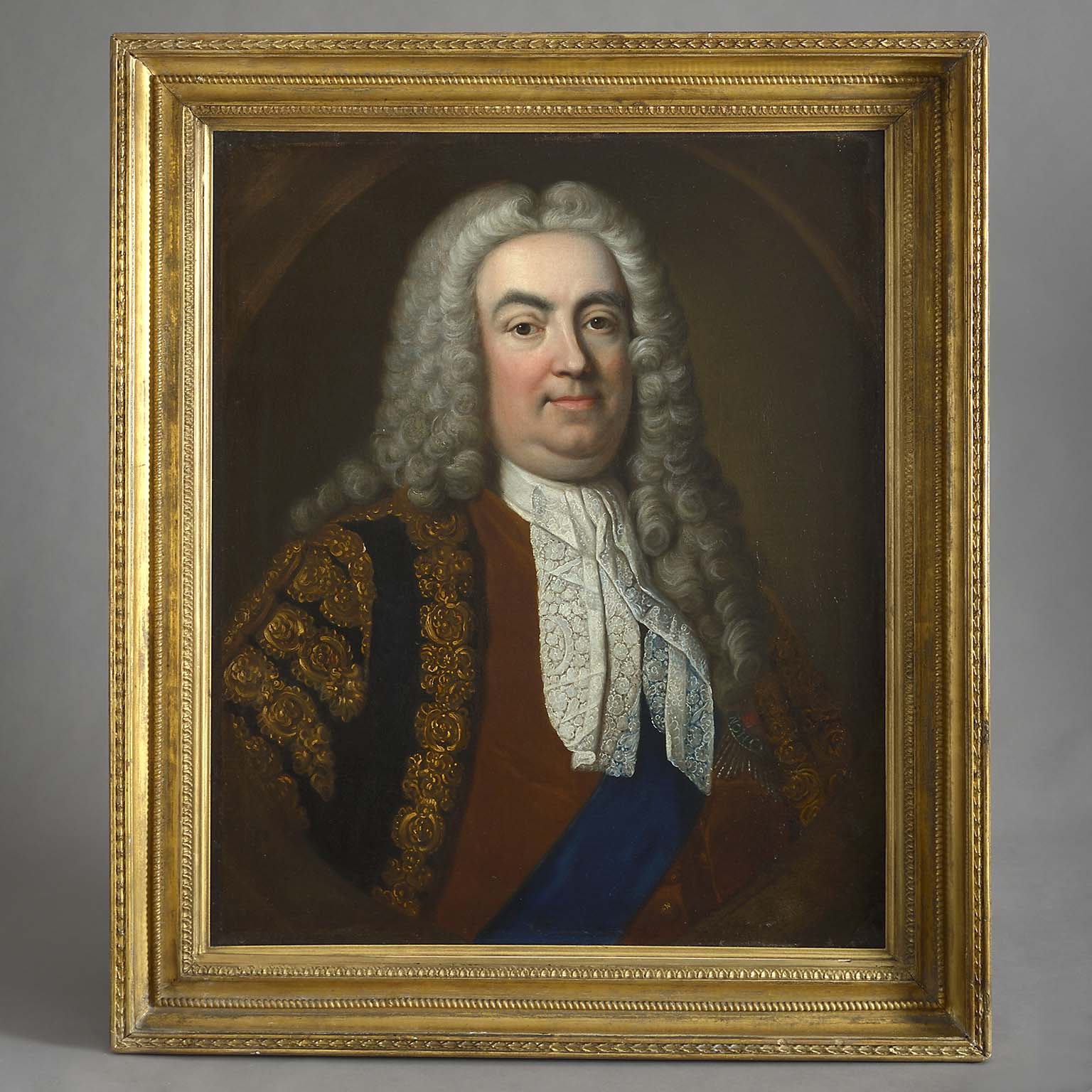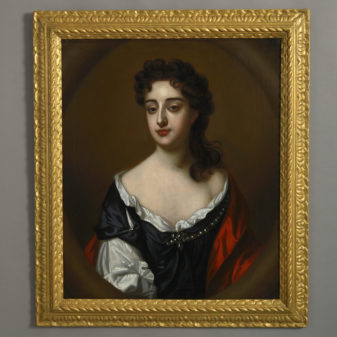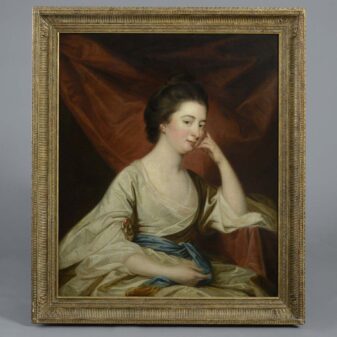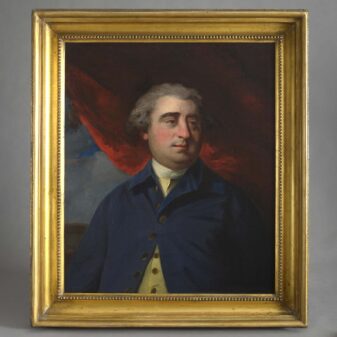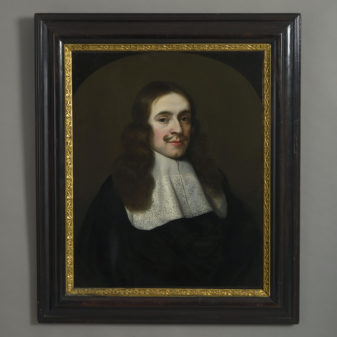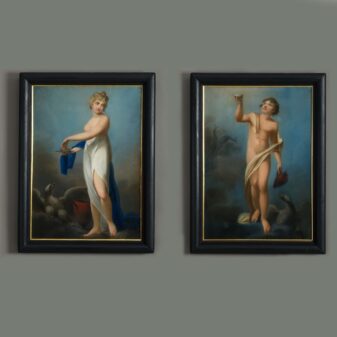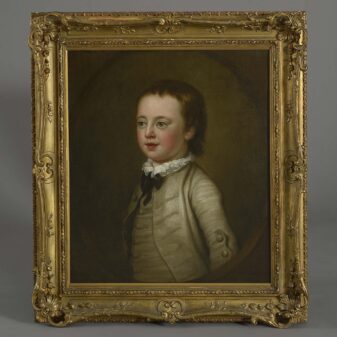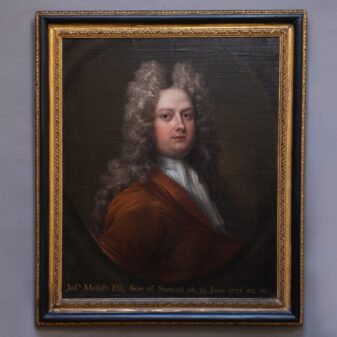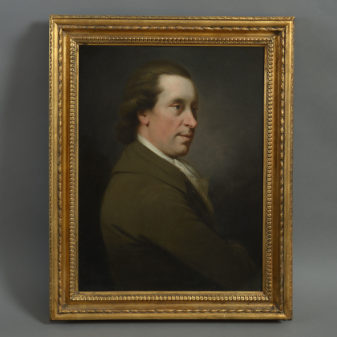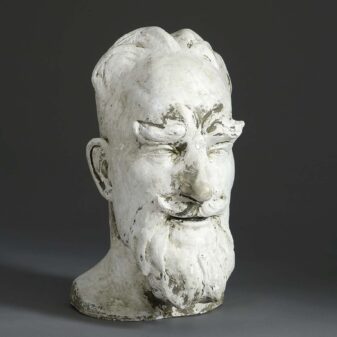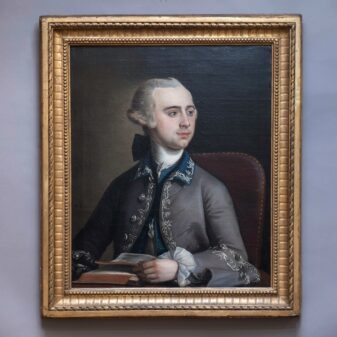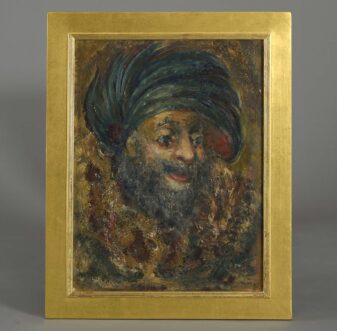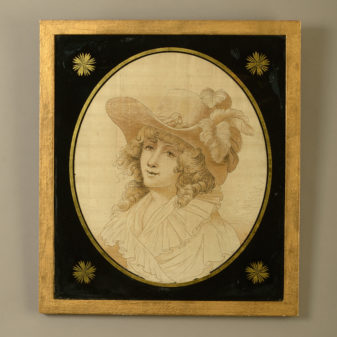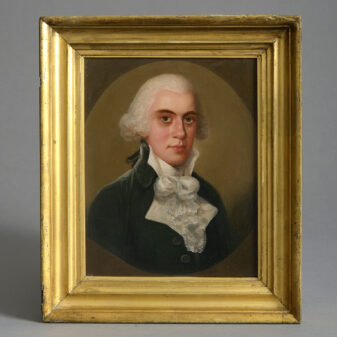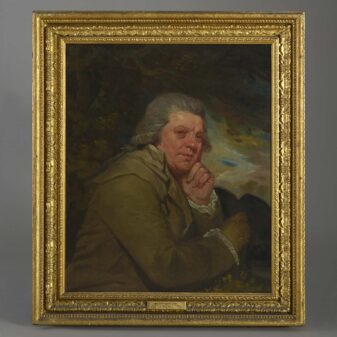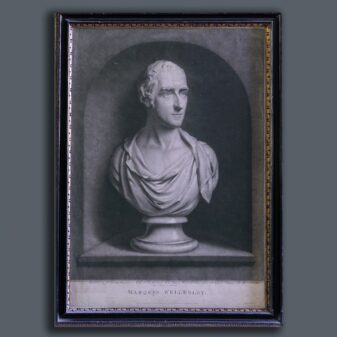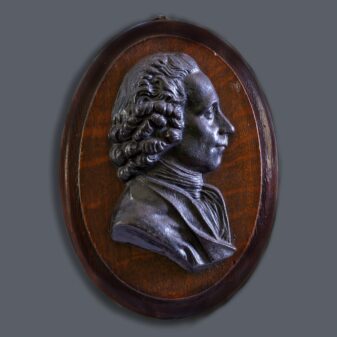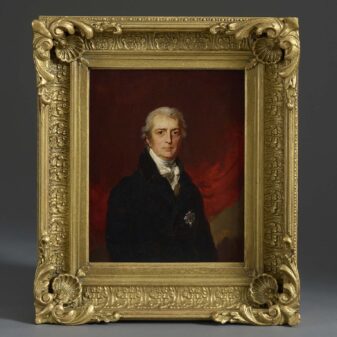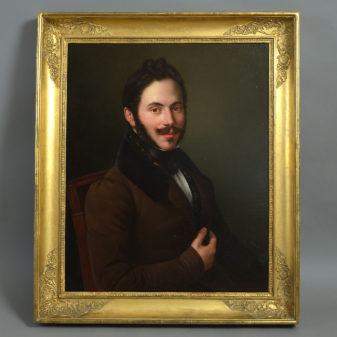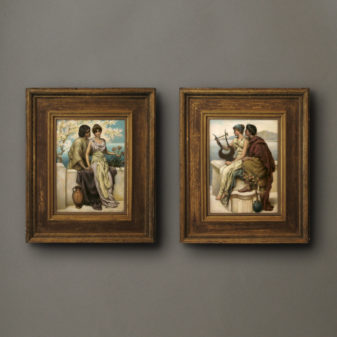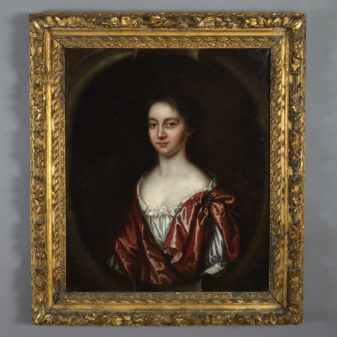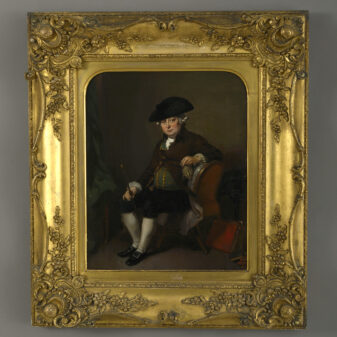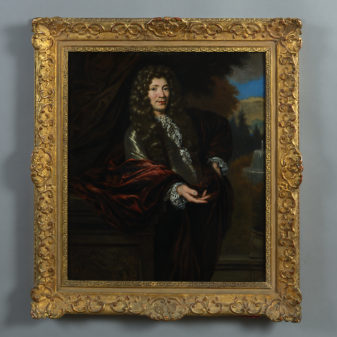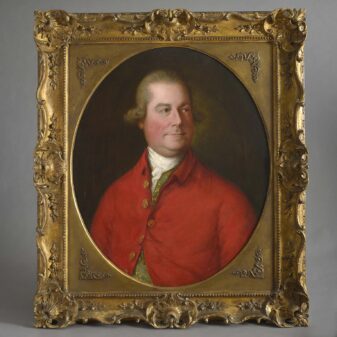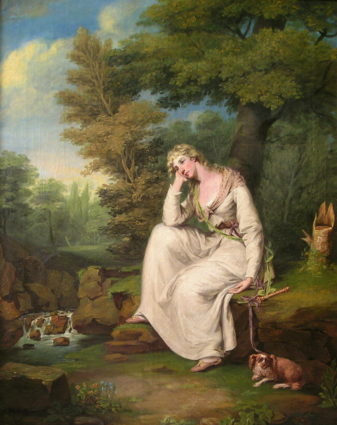Circa 1740 England
Studio of Jean Baptiste Van Loo (1684-1745) A Portrait of Sir Robert Walpole (1676-1745)
£7,900
1 in stock
Height 35 inches (89 cm)
Width 30 1/2 inches (77.5 cm)
Depth 3 inches (7.5 cm)
Studio of Jean Baptiste Van Loo (1684-1745)
Portrait of Sir Robert Walpole (1676-1745)
Oil on canvas; held in a period giltwood frame
Provenance: Philip Mould Ltd; An English Noble Collection
Sir Robert Walpole is one of the most significant figures in British political history and renowned as the first Prime Minister, though this was a title he was quick to deny as at the time it suggested an individual with too much power. Walpole was, of course, this person, and managed to expand and consolidate his power base effectively and consistently over the first twenty years of the 18th century. His political acumen resulted in the supremacy of the Whig party over this time and a considerable personal fortune which saw an outlet in a magnificent country house and art collection.
Given this, Walpole became one of the first politicians to actively take an interest in his personal iconography. This was a time when political allegiances, and the visual representations of such, were as important as loyalty to the crown. As much as a war of words he realised the strength of portraiture in this battle.
Walpole’s favoured artist was Charles Jervas, who, by no coincidence, was also painter in ordinary to the King. On his death in 1739 Walpole turned his favours to the Frenchman van Loo, who coincidentally also had royal patronage. By doing so he was keeping in favour with the monarch but also employing a much-favoured painter of the time to disseminate his image. Walpole has himself depicted in the black and gold robes of the Chancellor and the Garter ribbon and star. It is an image that is derived from a full-length original, painted in 1740, which formerly belonged to Walpole and is now in the State Hermitage Museum, Russia. This was one of the most widely circulated images of the Prime Minister particularly after it was printed in mezzotint in 1741 and proved the most popular with his political allies and followers. Other versions of this painting exist, importantly an identical one hanging over the central fireplace in the Cabinet room of No.10 Downing Street.

